Last issue we visited a local impoundment where the stocking group released 20,000 bass and 10,000 yellowbelly fingerlings into their new home. We hatched a plan to return to this impoundment, which we hadn’t fished previously and apply techniques that we had learnt from fishing other impoundments to see if we could land a couple of fish.
The day had arrived. After a late start, we got onto the water around mid-morning, with drizzly conditions and this, combined with the remote controlled, fuel powered boats whizzing around the main basin put a small dint in my confidence. I had a few of my favourite lures with me though, and a plan to target structure that had produced fish on other impoundments. A bit of earlier online research via Google Earth and Lowrance’s Insight Genesis mapping on their website, soon saw me paddling towards my first target structure, the original riverbed as it left the main basin.
There were bass schools holding on the edge of the old riverbed, so I positioned the yak up wind and commenced a slow drift back over the schools. Tail-spinners and blades did not produce fish, so it was time for a switch to soft plastics for a more subtle, finesse presentation. A couple more drifts and it was time to change things up as the fish seemed to be shut down.
Moving to a hump, where the water rose from 10m up to around 4m, I switched to metal vibration blades, a technique that saw me catch a couple of small fish, before the lilies started to call. After paralleling the lily edges for a while, positioning the kayak a couple of metres off the lilies and fanning long casts along the edges in front of the yak, I received a couple of bumps on spinnerbaits, but was unsure if they were spangled perch or bass that weren’t keen to commit to the strike. It was time to move onto my favourite bass structure, points.
Points are a go-to for impoundment anglers, offering fish a variety of depths, including shallows in close proximity to deeper water and often holding bait. A couple more taps on the spinnerbait and I decided to switch to something more subtle; a 2.5” paddle-tail plastic rigged with a #2 Gold Jig Spinner. Casting across the point and also along each side, it wasn’t long until a subtle tap turned into a jolting hook set and solid first run. After a couple of hours of experimentation, I had finally landed a decent bass.
From this point I landed a couple more bass on the soft plastic, rigged with or without a Jig Spinner, before calling it a day and leaving the water by early afternoon. It was a good feeling to fish new water and land a few fish, especially after talking to a dozen other kayak anglers and discovering only one of them had landed fish. There was no magic to my success, no voodoo dolls, lucky charms or rubbing of Buddha’s belly, it was simply a matter of doing some research, zeroing in on some key structure and carrying a few different lures that proved successful over time. Let’s have a look at a few key lures that have consistently produced fish for me and structure types that should see you hooked up.
Impoundments are ideal for kayak anglers, but often offer somewhere to escape average weather, less boat traffic and multiple launch points. They can be daunting though in terms of their size and knowing where to start fishing and what to look for.
Locating schools on the sounder, commonly in the old riverbed, on the flats near the riverbed and on deeper points, can lead to red hot ‘fish-a-cast’ sessions when the fish are on. On the other hand, some sessions will have you work your way through every lure in your box as the fish stubbornly sulk on the bottom. I will generally start with blades or tail-spinners, cover plenty of ground, and look for the reaction bite. If the school is shut down, I will then slow the blade right down or switch to a soft plastic and work it slowly through the school. Blades around 1/4-1/2oz and jigheads from 1/4-1/2oz will generally do the trick, rigged with 2.5-3.5” paddle-tails or curl-tails. At times, anglers will sit on a single school all day in a tournament and wait for the bite window, when they switch on and feed. While fishing socially I prefer to explore more structure types for active fish and return to the schools occasionally to see if they have become more active.
Sudden rises in the bottom often hold fish and are worth marking on the sounder for future exploration, even if they are not holding fish on the day. I fish these in the same way that I fish deep-schooled fish.
My go-to lures when fishing weed and lily edges are spinnerbaits and Jig Spinner rigged plastics. I fish this structure with two different techniques. I generally start with spinnerbaits from 1/4-1/2oz depending on depth, searching for those active, aggressively feeding fish. If the bite is finicky or slow I will then switch to a more subtle presentation in the form of a soft plastic, rigged with a Jig Spinner for more subtle flash and vibration. If the edge is fairly straight I will parallel the bank, and if it is less defined, with more pockets, small points and breaks in the weed and lilies, then I will sit a cast distance out from the bank and pick the pockets and prospect these breaks in the weed and lilies.
Points are a favourite of mine, and are a consistent producer of fish. If I could only fish one piece of structure in an impoundment it would be points. Points offer variations in water depth and temperature, commonly hold bait, and even create different environments within close proximity as the sun or wind can hit one side of the point and not the other. This often creates a more active environment within the larger environment of the impoundment.
In terms of lures, they’re all worth a throw, with blades and tail-spinners deadly in the deeper water. When the fish are active, smaller blades are worth a go, but when the bite is slower, spinnerbaits are ideal. Jig Spinners and plastics come into their own for more shut down bites, and especially when the fish are smaller.
Unfortunately I didn’t access any timber on this trip, missing out on the brutal strike and white knuckle fight that only timber offers. When fishing timber I turn to the snag resistance of lures like spinnerbaits, ChatterBaits and weedless rigged plastics, with the first two options calling more active fish and the weedless rigged plastics amazingly effective at opening the mouths of fish sulking deep in structure.
Cast to the outer edges and gradually work your casts deeper into the structure. If you can draw the fish out of the structure a little before it strikes, you increase your chances of landing it, but sometimes you just need to buckle up and get the lure right in there. Paralleling lay down timber and getting the lure right into the ‘V’ where branches and logs cross each other will increase your catches and ‘knock on wood’ – let your lure bump the timber, a method that could potentially wake up a predator.
This is a basic guide to some of the lures that work for me and some of the structure types that have consistently produced results on my adventures. The key take outs when it comes to exploring your local impoundments would be; research the area and available structure, have a plan, carry a variety of lures and mix up your lure presentations, target structure and retrieves until you crack a pattern. The more time you spend on the water, the more your bank of knowledge and experience will grow, the quicker you will work things out, and fingers crossed the more time your rod spends bent!
See you on the water.
Reads: 2637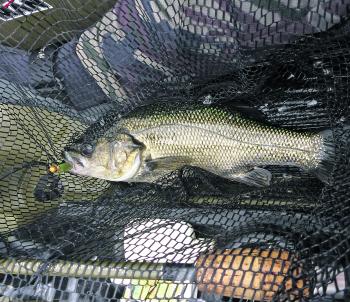
A bass in the net caught on a ZMan 2.5” Slim SwimZ.
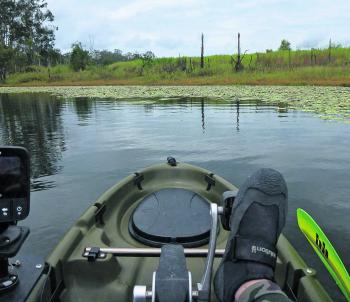
Picking pockets in the lilies with spinnerbaits and Jig Spinner rigged plastics.

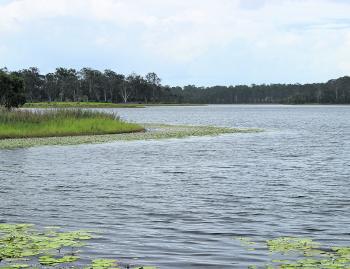
Points are consistent in producing good numbers of bass and are my favourite areas to fish.
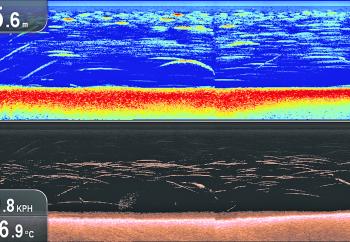
A couple of smaller fish came from this school on TT Lures Switchblades.
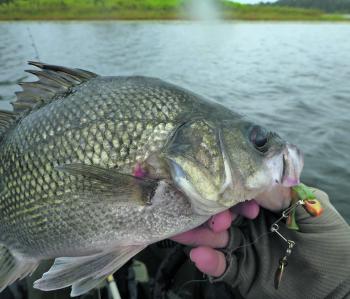
A jig spinner adds subtle flash and vibration to your soft plastic.

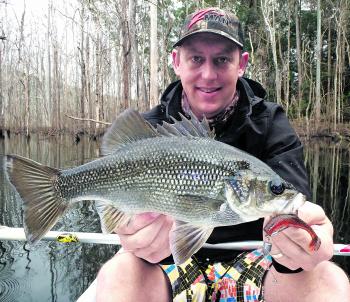
Jay Noble looking happy with a decent bass. When it comes to fishing the sticks, spinnerbaits and weedless plastics are excellent options.

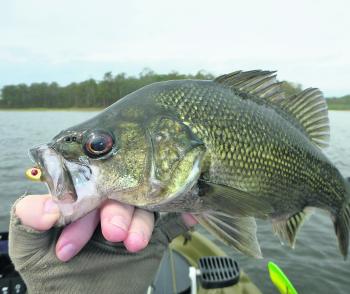
Small paddle tail or curl tail plastics are consistent producers on bass.
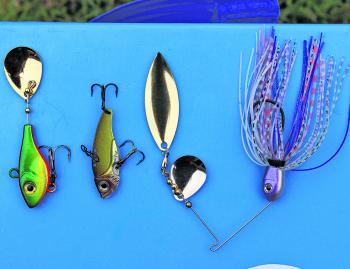
Three favourite reaction baits - tail spinner, blade and spinnerbait.
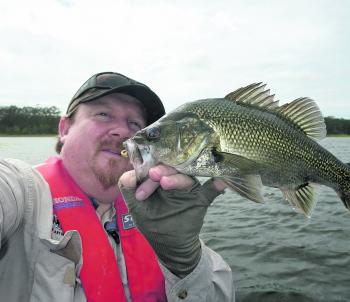
The author with a bass taken off a point on a ZMan Slim SwimZ.




